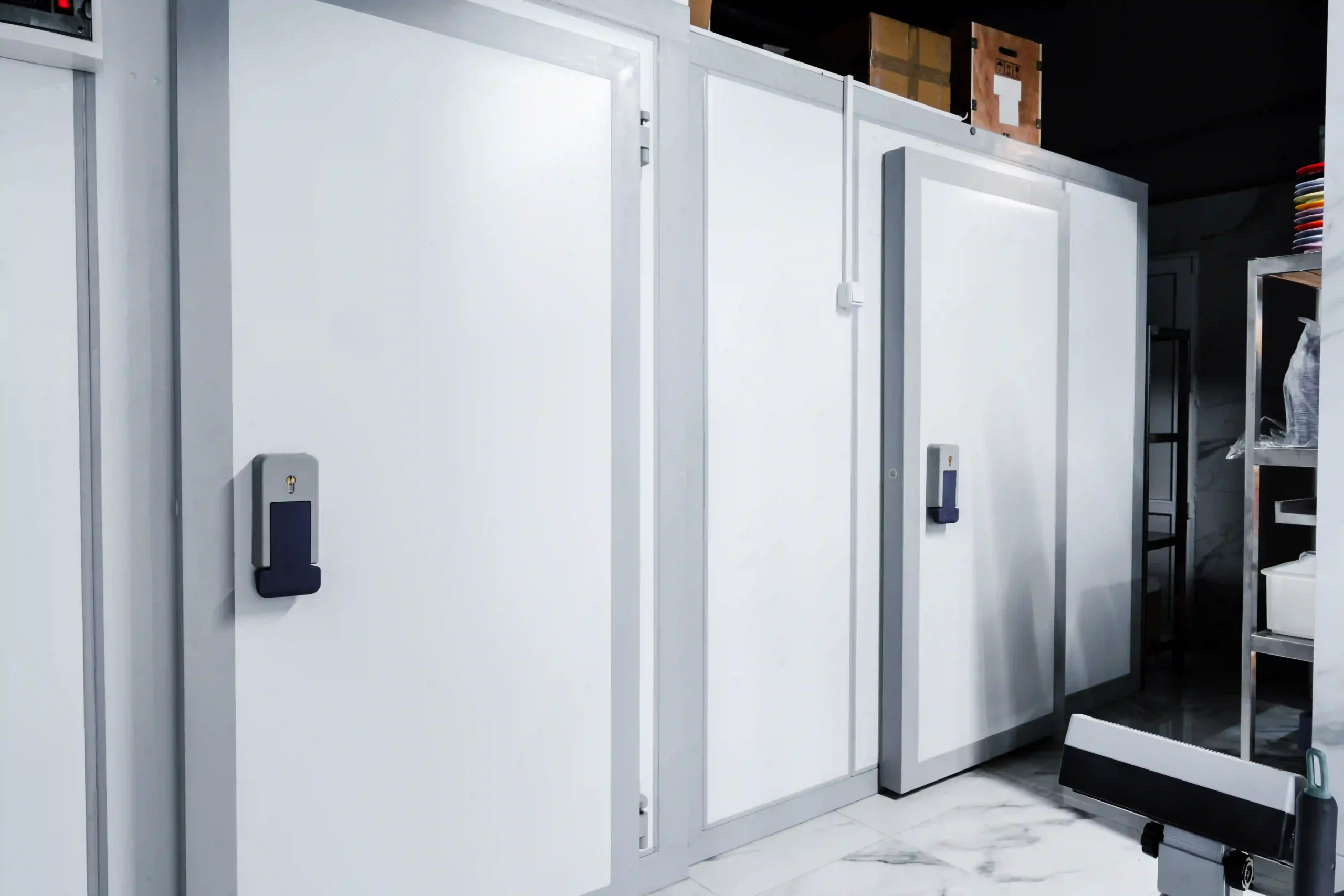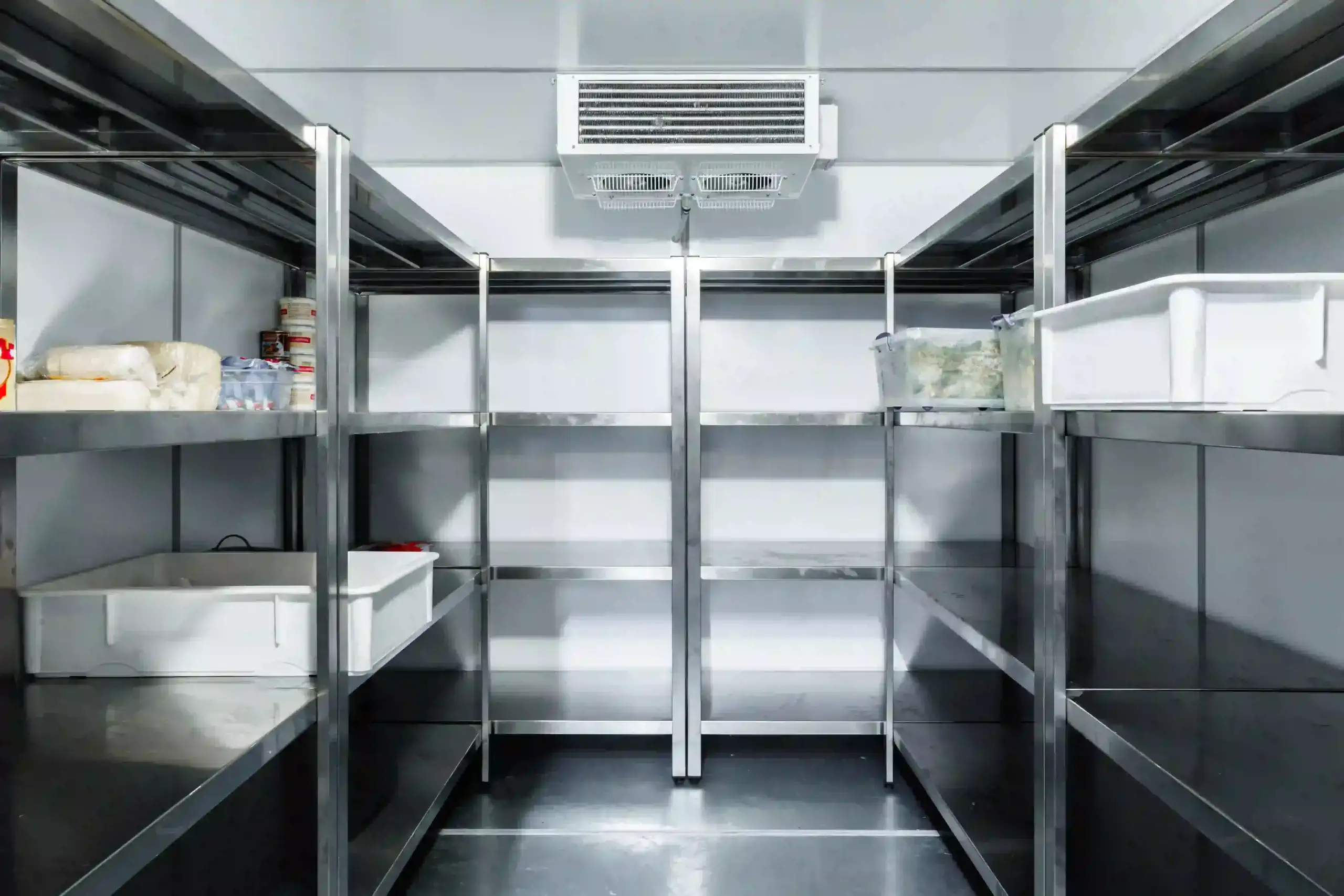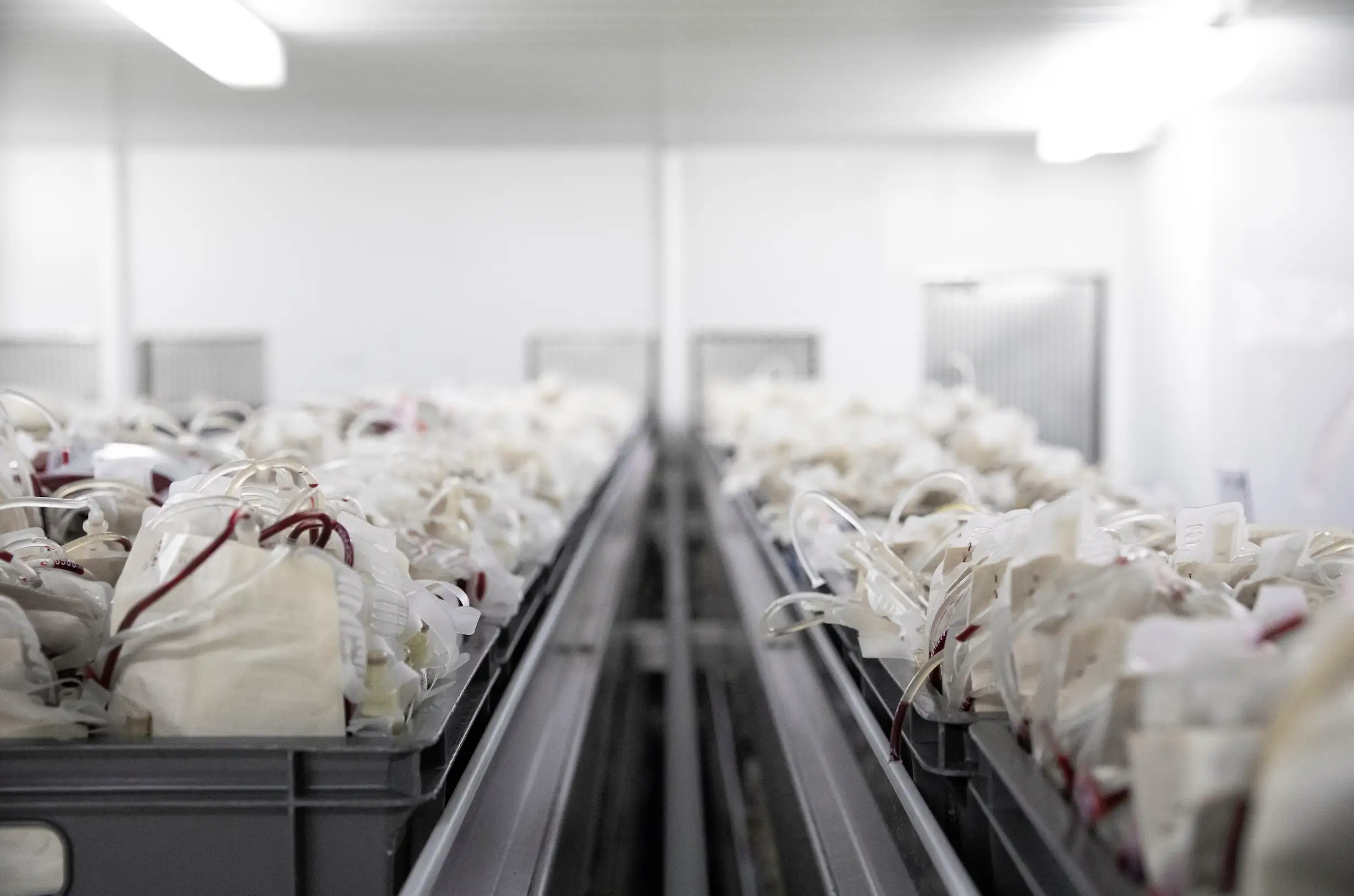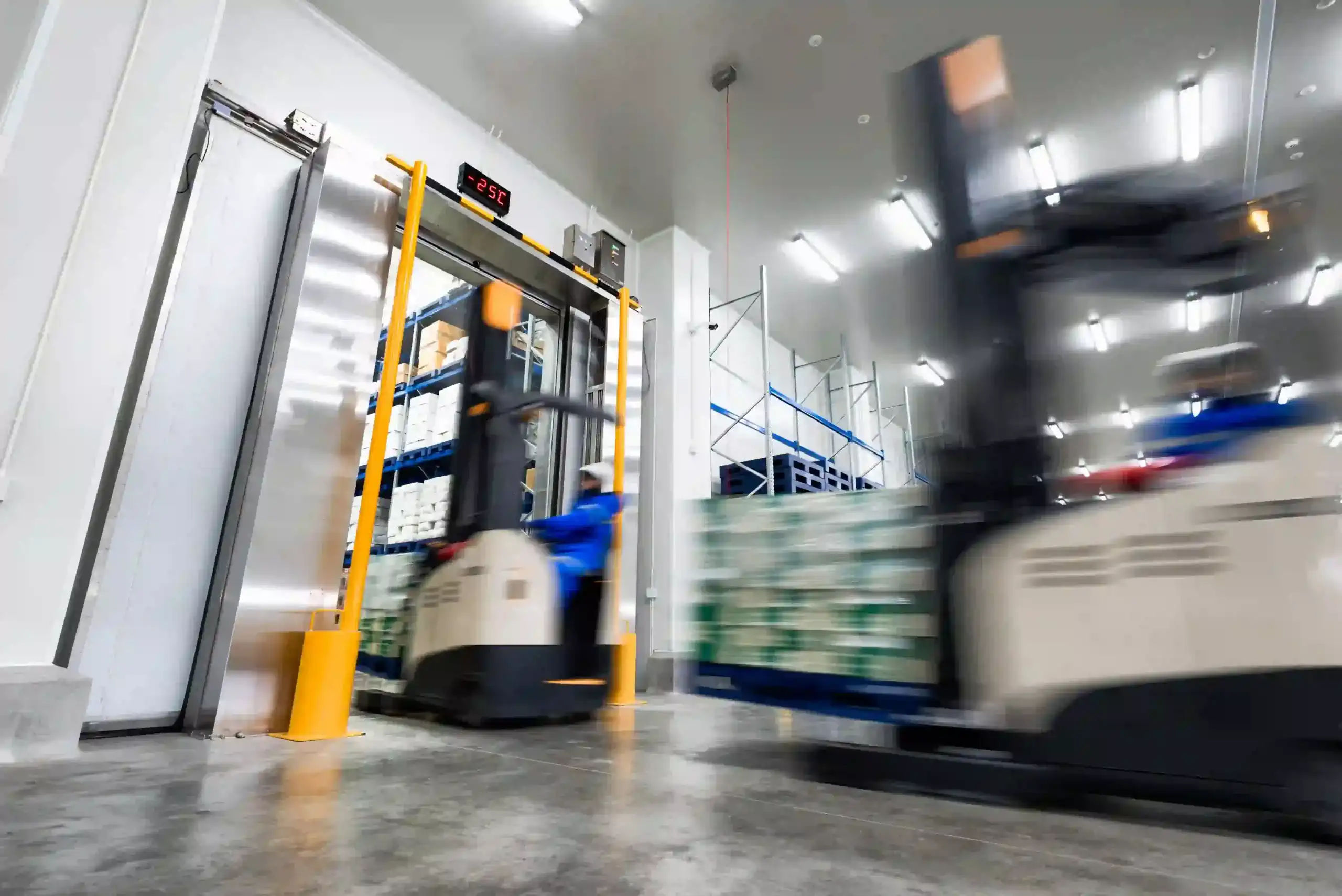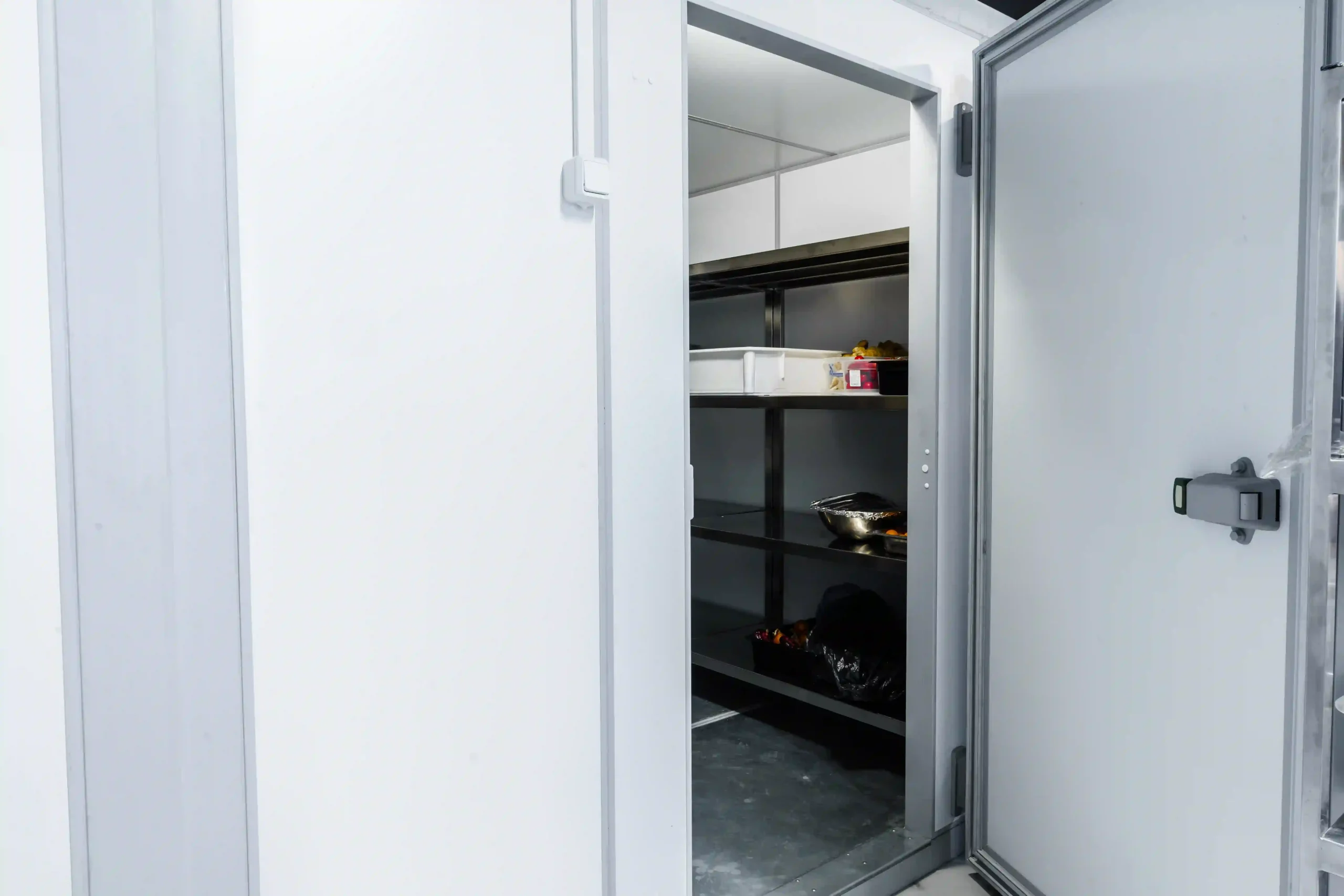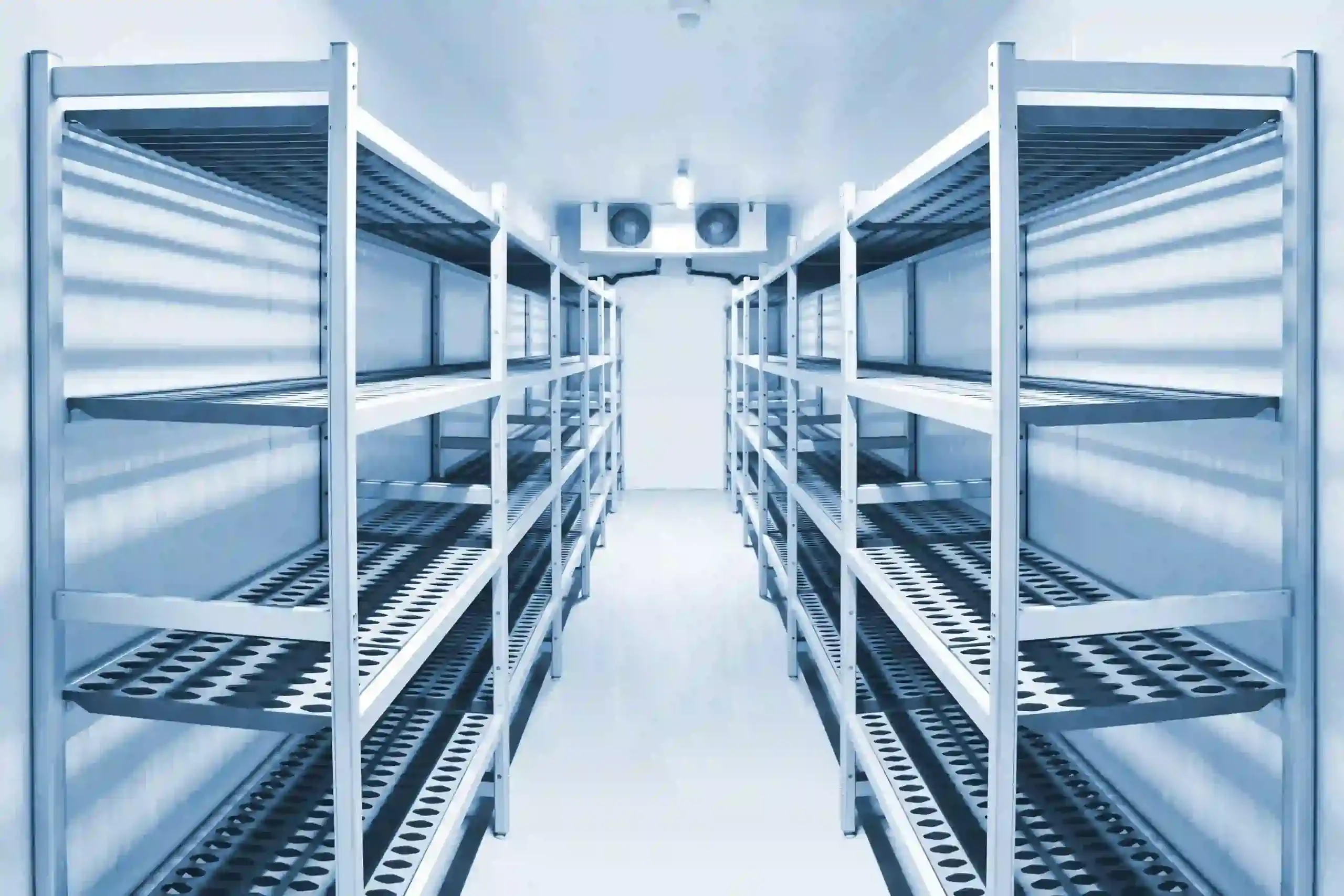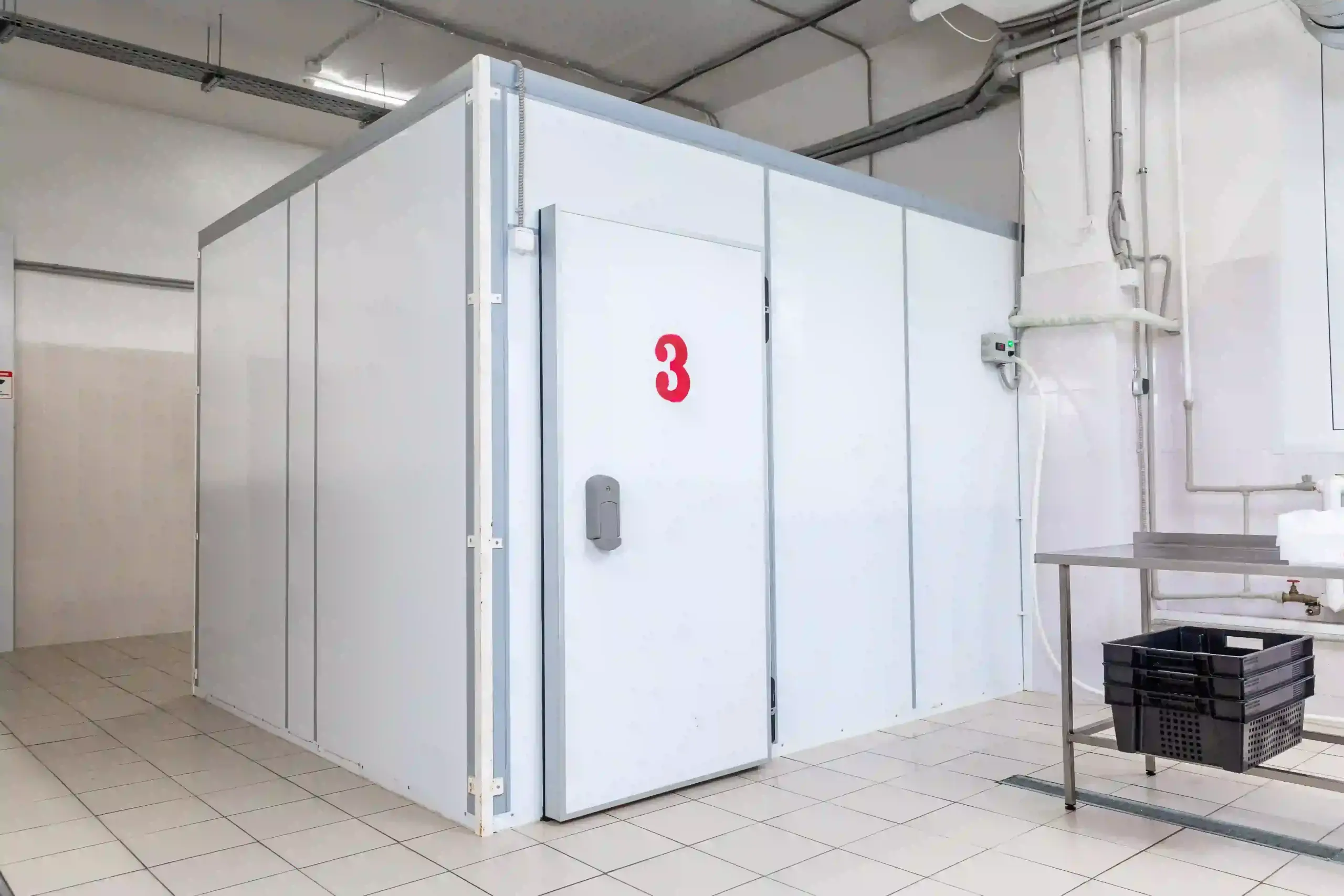
- Home
- Fish & Seafood Cold Rooms – Built in Turkey to Lock in Freshness from Dock to Delivery
Walk-In Chiller Rooms & Freezers Made in Turkey
Fish & Seafood Cold Rooms – Built in Turkey to Lock in Freshness from Dock to Delivery
Seafood doesn’t forgive mistakes. A few degrees too warm — or a few minutes too long outside the right zone — and it’s over. The shine’s gone. The texture’s off. And the shelf life? History.
That’s why we build fish and seafood cold rooms in Turkey that don’t just hold temperature — they hold the line. From fishing ports to resort kitchens, our walk-in systems are made for salty air, nonstop door swings, and pressure-packed prep lines. They stay cold, clean, and calm — so you don’t have to worry.
Whether you’re packing fillets at midnight or prepping today’s catch for a lunch rush, our cold rooms work the way you do: fast, focused, and built to handle real-world hustle.
1-Year Factory Warranty
Service in 90+ countries
Spare parts in Turkey, UAE
🧊 What Seafood Really Needs from Cold Storage
🌡️ Cold That Doesn’t Blink: We hold +0°C to +2°C for fresh, and -18°C to -25°C for frozen — and we don’t flinch in the heat.
· 💨 Air That Doesn’t Bruise the Goods: Gentle flow that keeps it cool without drying, frosting, or wrecking the texture.
· 🧼 Surfaces That Don’t Rust or Resist Cleaning: Stainless steel and PVC interiors that wipe down easy and don’t fight back.
· 🚪 Access That Moves With You: Non-slip floors, smart doors, crate-ready layouts — built for boots, gloves, and urgency.
· ⚙️ Layouts That Match Your Workflow: You’ve got a rhythm — unloading catch, loading trays, moving fast between prep and pack. Your cold room should move with you, not against you. That’s why we design each system around the way your team actually works — fluid, focused, and nonstop.
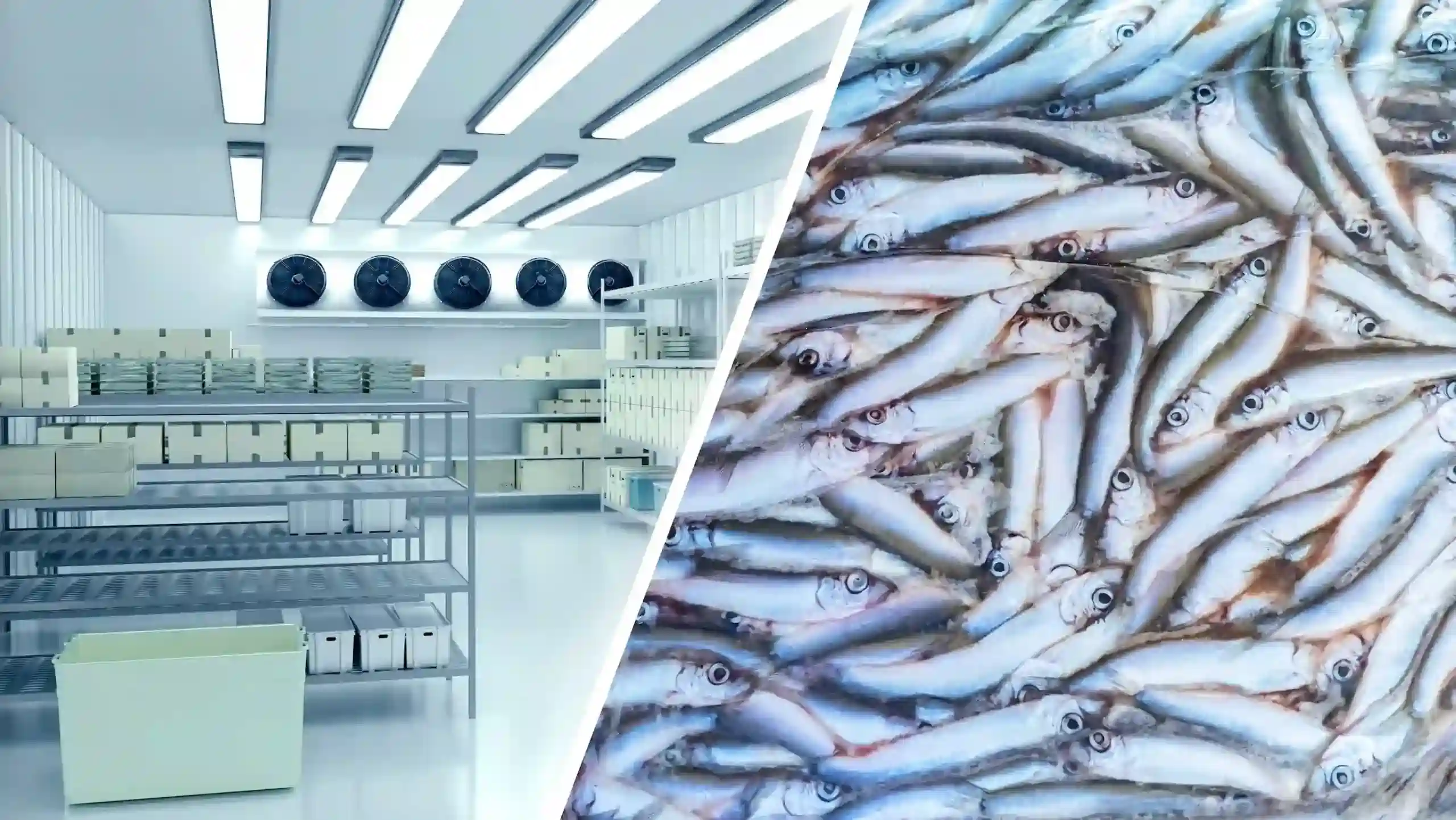
🌍 Who We Build For
- 🐠 Teams pulling fresh catch and getting it cold, fast
· 🦑 Processors working near docks, in heat and humidity
· 🧊 Exporters moving tons of seafood across borders
· 🧑🍳 Chefs serving seafood before the ice even melts
· 🛒 Fish markets needing cold that keeps up with demand
🧱 Cold Room Panels – Built for Salty Air & Frequent Use
Salt, moisture, and movement — seafood cold rooms face tough conditions. That’s why we reinforce our panel systems with:
Feature | Description |
🔲 Type | Modular / Sandwich with corrosion resistance |
🧊 Insulation | High-density PUR (40–44 kg/m³) |
📏 Thickness | 100 mm (chillers), 120 mm (freezers) |
🧽 Surface Finish | Stainless steel or PVC – both food-safe and salt-tolerant |
🚫 Floor Panels | Reinforced, waterproof, non-slip options |
🔗 Joint System | Cam-lock tongue & groove – sealed against moisture ingress |
🧼 Corner Profiles | Rounded, easy-clean hygiene corners |
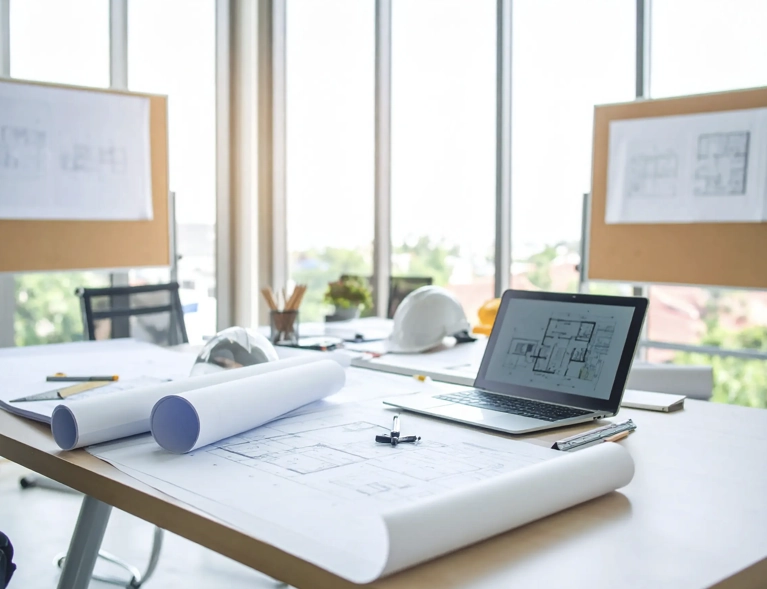
🪵 Floor Panel Options for Seafood Handling
. 🧲 Checker Aluminum Plate – Anti-corrosive, drain-friendly.
· 🧼 PVC Antislip Finish – Easy to wash, keeps grip in wet boots.
· 🐟 Stainless Steel (316 preferred) – For aggressive salt exposure.
🔄 Optional Install Layouts
🚧 Ramp entries for crate and trolley movement
· 🕳️ Recessed installation into fish market floors
· 🧱 Built directly on insulated slab for export hubs
· ❄️ Insulated foam layers under concrete for temperature stability
🧱 Walls & Ceilings That Withstand Humidity
🧱 Wall Panels: Salt-tolerant finish with smooth antibacterial surface
🔼 Ceiling Panels: Condensation-resistant and securely mounted
🚪 Cold Room Doors Made for Movement
. 🚪 Sliding Doors: For wide access with minimal thermal disruption
· 🚪 Flip-Flap Doors: For frequent in-and-out activity
· 🚪 Hinged Doors: Strong seals, reliable hold
💡 Lighting, Monitoring, Accessories
. 💡 LED Lights: Anti-fog, easy visibility in steam or mist
· 🌡️ Digital Controllers: Logging seafood temps with alert options
· 🚪 PVC Strip Curtains & Air Curtains: Cold stays in, flies stay out
· 🔩 Shelving, racks, drains, hose-compatible fixtures
📦 What Makes Our Fish & Seafood Cold Rooms Different
. 🇹🇷 Manufactured in Turkey – CE certified, HACCP compliant
· 🌊 Salt-resistant panels and fixtures for coastal use
· 🧊 Fast recovery cooling for high-volume environments
· 📦 Modular designs scalable to export or wholesale operations
· 📞 Support from real humans, not robots – documentation included
❓ FAQ – Fish & Seafood Cold Rooms
What temperature should seafood be stored at in cold rooms?
Fresh seafood is stored between +0°C and +2°C, while frozen seafood requires -18°C to -25°C. Staying in range prevents spoilage, odor, and texture loss.
Why do seafood cold rooms need stainless steel or PVC finishes?
Salt and moisture quickly corrode standard materials. Food-grade stainless steel (preferably 316) and PVC resist rust, stay hygienic, and are easier to wash down.
Can seafood cold rooms be installed directly at fish markets or dockside?
Yes. We engineer panel systems with corrosion-resistant coatings and drainage solutions, so they perform reliably in coastal and high-humidity conditions.
How do consultants integrate seafood cold rooms into BOQ and layout drawings?
They must specify anti-corrosive finishes, drainage systems, and tropicalized cooling units. Early BOQ planning avoids costly retrofits in fish markets and export hubs.
What ROI can exporters expect from Turkey-built seafood cold rooms?
Exporters often see 25–30% longer shelf life, reducing spoilage and shipment losses. One Oman exporter reported payback within two years after upgrading to Turkey-built systems.
💬 Real Projects & Client Testimonials – What Our Partners Say

